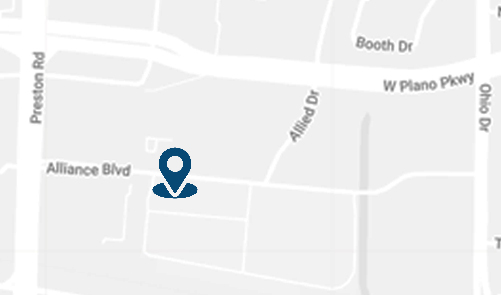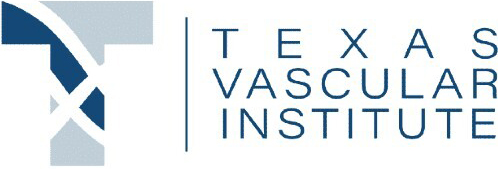By: Dr. Dev Batra | 01.29.23

Itchiness anywhere on your body, including your legs, can be due to many possible causes, such as sun or wind chapping, an allergic reaction, or skin conditions like eczema and psoriasis.
If you’ve ruled out all the obvious possibilities, you may be left with a bit of a shocker — you could have vein disease. More specifically, your vein disease may have progressed to the stage called venous stasis dermatitis, a serious condition.
At Texas Vascular Institute, with conveniently located offices in Dallas and Hurst, Texas, interventional radiologist Dr. Dev Batra and our staff take your vein health seriously. Here’s what we want you to know about leg itching and vein disease and why itchy symptoms aren’t normal.
How vein disease progresses
Your circulatory system is composed of arteries that take oxygenated blood away from the heart and veins that return deoxygenated blood back to the heart. On its return journey, though, the blood has to fight against gravity’s pull. To ensure blood flows properly, your calf muscles contract to force blood onward, and your veins have one-way valves that close tightly when the blood has passed.
If the vein walls sustain damage, such as from the intense force of high blood pressure, the valves can become damaged. Blood, then, is free to move back along its path, pooling around the damaged valve. This results in chronic venous insufficiency (CVI), or poor circulation.
One consequence of CVI is that the pooling blood may leak fluid into the surrounding tissue, irritating it and triggering inflammation along with itching and burning sensations.
If the superficial veins become pooled with blood, they push up against the skin and form colored, ropy protrusions — varicose veins. Sometimes varicose veins are just a cosmetic concern, but they can also cause swelling, burning, and of course, itching. More importantly, the blood can clot in the deeper veins, known as deep vein thrombosis (DVT). If the clot breaks away, it can cause a pulmonary embolism, a potentially life-threatening condition.
If you don’t treat varicose veins, in addition to DVT, you can develop painful leg swelling (edema). Edema can then lead to venous stasis dermatitis, which alters the color and appearance of the skin on your legs.
Initially, you’ll see orange-brown spots that form when the pressure from the edema bursts small capillaries; the discoloration may change to brown or red around your ankles and lower legs. Your skin may also become shiny, thick and scaly, dry and itchy.
And if still left untreated, the problem can progress to open sores called venous ulcers. These slow-healing lesions can be painful, itchy, infected, and form ugly scar tissue once they’ve healed. For diabetics, who often have poor circulation in their extremities, venous ulcers are a leading cause of lower-limb amputation.
Treating the underlying cause of leg itching
At Texas Vascular Institute, we treat diseased veins with several minimally invasive procedures, removing the itchy symptoms by addressing the problem at its source. These include:
ClosureFast™
ClosureFast uses radiofrequency (RF) waves to ablate the damaged vein. The RF energy forces the vein’s walls to collapse, sealing it shut. Blood is then rerouted to surrounding healthy veins.
VenaSeal™
VenaSeal uses an injectable adhesive to seal the diseased vein shut, and again, blood flow is rerouted to healthy veins.

Ultrasound-guided foam sclerotherapy
Regular sclerotherapy uses a sclerosant (irritant) injected into the vein, causing the vein walls to scar over and collapse. However, since most sclerosing agents are liquids, it’s difficult to achieve an even distribution of the sclerosant within the veins.
To address this problem, Dr. Batra uses ultrasound-guided sclerotherapy, allowing him to provide a more precise treatment. First, he injects a gas into the sclerosing agent. The gas produces a foam, serving as a marker that can be viewed with ultrasound imaging. Next, using the image, he injects the foam-sclerosant blend into the vein with great precision.
Microphlebectomy
If your varicose vein is close to the skin’s surface, Dr. Batra might choose to treat it with a microphlebectomy. He makes very small incisions (less than ¼-inch) above the vein, then uses a hook to remove it from the leg in segments.
If you’re experiencing leg itching and know it’s not coming from dry skin or an allergy, you might have underlying vein disease. To determine the exact cause of your symptoms, call Texas Vascular Institute at either of our locations to schedule a consultation with Dr. Batra or book online with us today.
Read more blogs
Embolization Procedure
Discover embolization procedures for non-surgical relief from knee pain, heel pain, and fibroids. Safe, effective, and fast recovery.
Find Relief Without Surgery
Find relief without surgery at Texas Vascular Institute. Minimally invasive vascular treatments, faster recovery, and compassionate care.
Uterine Fibroid Embolization
Learn how Uterine Fibroid Embolization (UFE) treats fibroids safely without surgery. Discover benefits, recovery, and if it’s right for you.
WHAT OUR PATIENTS
have to say
Texas Vascular Institute always appreciates feedback from our valued patients. To date, we’re thrilled to have collected 378 reviews with an average rating of 5 out of 5 stars. Please read what others are saying about Texas Vascular Institute below, and as always, we would love to collect your feedback.
Leave a Review
Amazing Practice
I'm very particular with my Healthcare and tend to be cautious with referrals to specialists. This office is amazing from the first point of contact. Their staff are friendly, professional and highly knowledgeable. Then the Dr is just as amazing as his staff, absolutely brilliant. Office manager Jessica has this office running like a well oiled machine and does so with a smile, an air of confidence, kindness and professionalism. Love this practice!!
- Richard G.

Beyond Thankful
Dr Batra and his staff are amazing! We are so grateful to have found him. Everyone is so kind and so caring and Dr Batra explains everything so well and does procedures with excellence. Beyond thankful to be under their care!!!
- Bitsy P.

Gold Standard
This is a gold standard for how a medical practice should be run. I was promptly seen at my scheduled time, my ultrasound was thorough and I received plenty of attention and care from the staff and Dr.Batra.
- Weronika L.
INSURANCE
We accept most major insurance plans. Please contact the medical office for all insurance related questions.









8330 Meadow Rd #100
Dallas, TX 75231
For Appointments: 972-798-4710
General Inquiries: 972-646-8346

809 West Harwood Rd, Suite 101,
Hurst, TX 76054
For Appointments: 972-798-4710
General Inquiries: 972-646-8346

4716 Alliance Blvd Suite #180,
Plano, TX 75093
For Appointments: 972-798-4710
General Inquiries: 972-646-8346

